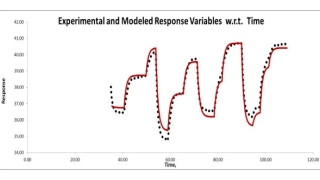
The classic textbook method to generate FOPDT models is the reaction curve technique, a pre-computer era technique: Start from a steady state, make a step and hold in the controller output, wait for a final steady state, then use features of the response to determine FOPDT coefficient values. It is simple to understand and to implement, and it can be derived from the analytical solution of the ODE; so it serves the current content of undergraduate engineering education appropriately; however, I believe reaction curve techniques do not express best practices in the computer era. They upset the process, do not reject disturbances, and only use 4 points from all of the data. Nonlinear best fit of the model to a skyline response is better.

